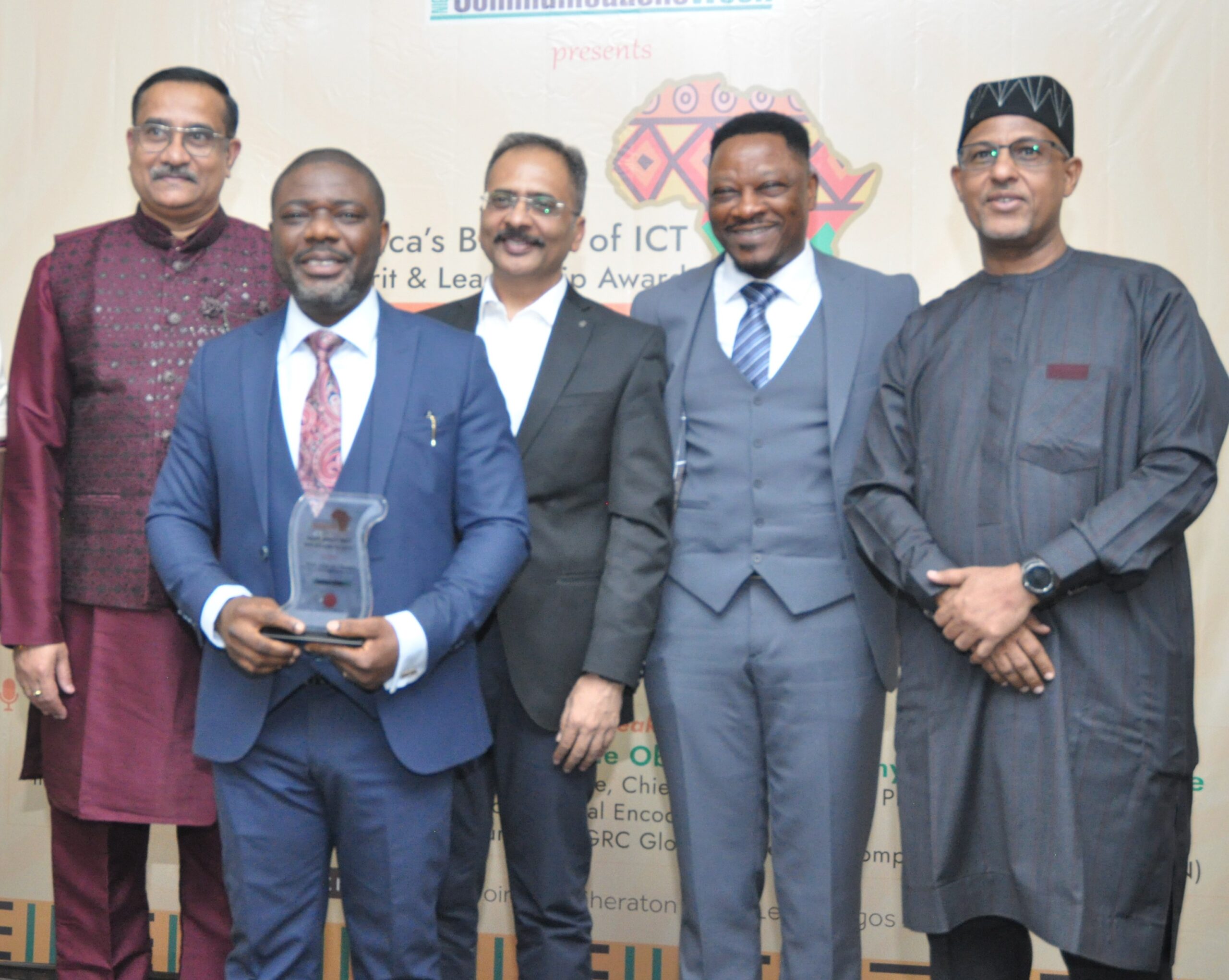Telecom
Key Trends in Sophos 2022 Threat Report

Sophos, a global leader in next-generation cybersecurity, on Wednesday published the Sophos 2022 Threat Report, which shows how the gravitational force of ransomware’s black hole is pulling in other cyberthreats to form one massive, interconnected ransomware delivery system – with significant implications for IT security.

The report, written by SophosLabs security researchers, Sophos Managed Threat Response threat hunters and rapid responders, and the Sophos AI team, provides a unique multi-dimensional perspective on security threats and trends facing organizations in 2022.
The Sophos 2022 Threat Report analyzes the following key trends:
1. Over the coming year, the ransomware landscape will become both more modular and more uniform, with attack “specialists” offering different elements of an attack “as-a-service” and providing playbooks with tools and techniques that enable different adversary groups to implement very similar attacks.
According to Sophos researchers, attacks by single ransomware groups gave way to more ransomware-as-a-service (RaaS) offerings during 2021, with specialist ransomware developers focused on hiring out malicious code and infrastructure to third-party affiliates.
Some of the most high profile ransomware attacks of the year involved RaaS, including an attack against Colonial Pipeline in the U.S. by a DarkSide affiliate.
An affiliate of Conti ransomware leaked the implementation guide provided by the operators, revealing the step-by-step tools and techniques that attackers could use to deploy the ransomware.
Once they have the malware they need, RaaS affiliates and other ransomware operators can turn to Initial Access Brokers and malware delivery platforms to find and target potential victims. This is fueling the second big trend anticipated by Sophos.
2. Established cyberthreats will continue to adapt to distribute and deliver ransomware. These include loaders, droppers and other commodity malware; increasingly advanced, human-operated Initial Access Brokers; spam; and adware. In 2021, Sophos reported on Gootloader operating novel hybrid attacks that combined mass campaigns with careful filtering to pinpoint targets for specific malware bundles.
3. The use of multiple forms of extortion by ransomware attackers to pressure victims into paying the ransom is expected to continue and increase in range and intensity. In 2021, Sophos incident responders catalogued 10 different types of pressure tactics, from data theft and exposure, to threatening phone calls, distributed denial of service (DDoS) attacks, and more.
4. Cryptocurrency will continue to fuel cybercrimes such as ransomware and malicious cryptomining, and Sophos expects the trend will continue until global cryptocurrencies are better regulated. During 2021, Sophos researchers uncovered cryptominers such as Lemon Duck and the less common, MrbMiner, taking advantage of the access provided by newly reported vulnerabilities and targets already breached by ransomware operators to install cryptominers on computers and servers.
“Ransomware thrives because of its ability to adapt and innovate,” said Chester Wisniewski, principal research scientist at Sophos. “For instance, while RaaS offerings are not new, in previous years their main contribution was to bring ransomware within the reach of lower-skilled or less well-funded attackers.
This has changed and, in 2021, RaaS developers are investing their time and energy in creating sophisticated code and determining how best to extract the largest payments from victims, insurance companies, and negotiators. They’re now offloading to others the tasks of finding victims, installing and executing the malware, and laundering the pilfered cryptocurrencies.
This is distorting the cyberthreat landscape, and common threats, such as loaders, droppers, and Initial Access Brokers that were around and causing disruption well before the ascendancy of ransomware, are being sucked into the seemingly all-consuming ‘black hole’ that is ransomware.
“It is no longer enough for organizations to assume they’re safe by simply monitoring security tools and ensuring they are detecting malicious code. Certain combinations of detections or even warnings are the modern equivalent of a burglar breaking a flower vase while climbing in through the back window.
“Defenders must investigate alerts, even ones which in the past may have been insignificant, as these common intrusions have blossomed into the foothold necessary to take control of entire networks.”
Additional trends Sophos analyzed include:
· After the ProxyLogon and ProxyShell vulnerabilities were discovered (and patched) in 2021, the speed at which they were seized upon by attackers was such that Sophos expects to see continued attempts to mass-abuse IT administration tools and exploitable internet facing services by both sophisticated attackers and run-of-the-mill cybercriminals
· Sophos also expects cybercriminals to increase their abuse of adversary simulation tools, such as Cobalt Strike Beacons, mimikatz and PowerSploit. Defenders should check every alert relating to abused legitimate tools or combination of tools, just as they would check a malicious detection, as it could indicate the presence of an intruder in the network
· In 2021, Sophos researchers detailed a number of new threats targeting Linux systems and expect to see a growing interest in Linux-based systems during 2022, both in the cloud and on web and virtual servers
· Mobile threats and social engineering scams, including Flubot and Joker, are expected to continue and diversify to target both individuals and organizations
· The application of artificial intelligence to cybersecurity will continue and accelerate, as powerful machine learning models prove their worth in threat detection and alert prioritization. At the same time, however, adversaries are expected to make increasing use of AI, progressing over the next few years from AI-enabled disinformation campaigns and spoof social media profiles to watering-hole attack web content, phishing emails and more as advanced deepfake video and voice synthesis technologies become available
To learn more about the threat landscape in 2021 and what this means for IT security in 2022, read the full Sophos 2022 Threat Report.
Additional content for the Sophos 2022 Threat Report:
· Video of the headline findings, presented by Chester Wisniewski, principal research scientist, Sophos
· An article on SophosLabs Uncut recapping the report sections
· A Sophos News opinion piece by Wisniewski on the ransomware turf wars
· A Naked Security article introducing the report
Telecom
Glo, Huawei, Communications Ministry Bring Digital Services to Abuja Village

Telecommunications and digital services provider, Globacom, has partnered with the Federal Ministry of Communications, Innovation and Digital Economy and Huawei Nigerian Enterprises, to provide digital access to 7,000 remote communities in Nigeria with the commissioning of the pilot project in Isuanin Kura in Ibwa 2, Gwagwalada, on the outskirts of the Federal Capital Territory, Abuja on Wednesday.

The project, which is championed by the Ministry, will deliver 2G/3G/4G services, free public Wi-Fi access, digital healthcare and remote learning capabilities to the over 12,000 residents of the community.
Minister of Communications, Innovation and Digital Economy, Dr. Bosun Tijani, was full of commendation to Globacom and Huawei for supporting President Bola Tinubu’s commitment to addressing the connectivity crisis affecting more than 20 million Nigerians who currently lack basic telecommunication access in the country.
Said he: “If you bring out your phone in many communities, there is no network at all. This is costing the country significantly because people cannot access financial services, medical care, or education”, adding that this also poses governance challenges as disconnected areas are difficult to administer.
“Where you live should not determine your access to opportunity. We are using innovation to ensure every Nigerian, regardless of location, can thrive in the digital age”, the Minister added.
Globacom’s Group Chief Technical Director, Mr. Sanjib Roy, who spoke on the project said the company worked with the Ministry and Huawei to bring up the site by providing the Microwave backhaul link and access to Globacom’s full core network resources and also manage the operation of the site to ensure uninterrupted voice and data services for the community.
“The Smart Education facility allows for young students within the community to receive education remotely, with the teachers being in Abuja or any other part of the world, while Healthcare delivery has been revolutionised through connected medical equipment that enables remote consultations between patients in Ibwa and doctors and specialists in urban-locations”, Mr Roy explained. The site and all the equipment are powered by solar thereby ensuring clean environment and uninterrupted power supply.
During the inauguration, the system’s effectiveness was demonstrated with the leader of Isuanin Kura, Ibwa 2 Community, Chief Abubakar Bamaiyi, having a live consultation with a medical doctor in Abuja, while the Minister and other guests watched as the students in the local school were being taught via online video by a teacher in Lagos, using equipment provided by Huawei.
Mr Kazeem Kaka, Globacom’s Head of Division, North West, who also spoke at event, said, “For Globacom, this is a continuation of our long-standing mission to democratize access to communication. Since 2003, we have remained at the forefront of efforts to lower the barriers to connectivity—making telephony, internet, and data services more accessible and affordable for all Nigerians.
“Today’s launch reinforces that commitment. We are particularly excited about the impact this initiative will have on education, healthcare, and economic empowerment of Ibwa people”.
In his remarks, Mr Terrens Wu, Managing Director, Huawei Nigerian Enterprises, said his company was proud to be part of the initiative to provide connectivity, and promote learning and healthcare in rural communities through digital technology. His company later gave out 120 affordable smartphones to the community to help them have access to telephony.
Telecom
Experts @ ABoICT 2025 Warn of Digital Disaster Risks in Nigeria Without AI Governance

As artificial intelligence (AI) continues to transform the global digital landscape, two prominent technology leaders have issued urgent warnings and strategic calls for Nigeria and Africa to adopt a unified, governance-driven approach to AI development, emphasizing that trust, regulation, and cybersecurity are more important than ever.

L-r: Dr. Krishnan Ranganath, Regional Executive, West Africa, Africa Data Centres, Adewale Obadare, chief visionary officer, Digital Encode, Amrish Singhal, chief operations officer, Spectranet, Engr. Ike Nnamani, Managing Director, Digital Realty Nigeria and Rudman Muhammed, Managing Director, Internet Exchange Point of Nigeria, at the 16th Africa’s Beacon of ICT Merit and Leadership awards held in Lagos recently.
At the 2025 Africa’s Beacon of ICT Merit & Leadership Award (ABoICT 2025), held over the weekend in Lagos, Professor Adewale Peter Obadare, Chief Visionary Officer of Digital Encode, and Amrich Singhal, Chief Operating Officer of Spectranet, independently but powerfully echoed the same sentiment: AI without governance is a ticking time bomb.
Delivering his keynote on “AI Governance, Standardization and Cybersecurity in the AI Era,” Prof. Obadare warned against the rising trend of “AI washing”—where companies label basic software or services as “AI” to capitalize on hype, often without the underlying technological integrity or oversight.
“People are calling everything AI today, from photography apps to basic automation, but no one is talking about AI governance,” he said.
Drawing comparisons to the early days of the internet, Obadare cautioned that failing to integrate security and governance into AI architecture could lead to far-reaching consequences. “We are repeating the same mistake we made with TCP/IP, which was not built with cybersecurity in mind. We cannot afford to make that error again.”
He emphasized that governance should not be seen as a hindrance but as an enabler of safe innovation. “Governance is not a brake to stop movement; it is a brake to make movement safe,” he said.
Citing international standards like ISO/IEC 42001 and ISO/IEC 38507, Obadare called for responsible innovation grounded in clear ethical guidelines, stressing the importance of securing the core components of AI: data, models, and infrastructure.
Echoing similar concerns, Amrich Singhal, chief operating officer, Spectranet in his presentation themed “Responsible AI and Nigeria: Balancing Innovation, Regulation, and Cybersecurity,” stressed that “the countries that will benefit most from AI are not necessarily those with the most powerful models, but those with the most trusted systems.”
Singhal painted AI as a double-edged sword, capable of boosting national productivity while also enabling new forms of cyber manipulation—from deepfakes to identity theft and disinformation. “AI can clone voices, create fake personas, and even undermine democracy. It’s no longer a question of readiness, it’s a question of urgency,” he declared.
He acknowledged Nigeria’s potential due to its youthful, tech-savvy population and its expanding use of AI across sectors like healthcare, agriculture, education, and oil exploration.
However, he criticized existing regulatory structures such as the Nigeria Data Protection Regulation (NDPR) and NITDA’s 2023 draft AI framework as being “underdeveloped, underfunded, and poorly enforced.”
Both experts called for a multi-stakeholder approach to AI governance. Prof. Obadare warned of real-world failures, such as Microsoft’s racist chatbot Tay, Amazon’s gender-biased recruitment AI, and Uber’s fatal autonomous vehicle incident, not as tech failures, but as governance failures.
He also cited cybersecurity breaches, including the 2023 hacking of OpenAI’s ChatGPT and the leak of DeepSeek’s API keys and user data on launch day, to stress that “the danger is not just in the algorithms, but in how we design and deploy them.”
Singhal proposed a three-tiered strategy to build Nigeria’s AI resilience: government must champion AI education, create safe innovation sandboxes, and enforce data laws; private companies must adopt ethical and secure design practices; and civil society must raise awareness of digital rights and AI risks—especially for vulnerable populations.
In a firm conclusion, Prof. Obadare urged that “governance must be embedded by design,” warning that irresponsible innovation has already proven costly and called on both developers and policymakers to act before Nigeria’s AI future becomes a liability rather than a strength.
Meanwhile, Singhal closed with a stark challenge: “AI is already here. The question is not whether to use it, but how. Nigeria must choose whether AI will be a great equalizer or its greatest vulnerability.”
As the nation moves deeper into the AI era, the message is clear: building trust, enforcing cybersecurity, and embedding responsible governance must be at the core of Nigeria’s AI journey, before it’s too late.
Telecom
MTN Nigeria Wins Award for Best Use of Data @MarkHack 4.0 Awards Night

MTN Nigeria’s commitment to digital innovation took center stage at MarkHack 4.0, the annual marketing and technology conference held at Landmark Event Centre, Victoria Island, Lagos, on Friday, May 23, 2025, with the theme ‘Experience Ignited: Fueling the Customer’s Journey’.

L-R: Akinbulejo Onabolu, Head, Enterprise Segment, MTN Nigeria; Eneyi Obi, Global Chief Marketing Officer, Rise; Tobi Olanisimi, Marketing Manager, AB InBev; Martha Kayode, Marketing Head, PZ Cussonz; Sulaiman Shaibu, CEO, BFT Consulting Service and Daniel Adeyemi, Managing Editor, Condia Business at the MarkHack 4.0 Conference held at the Landmark Event Centre, Victoria Island, Lagos on Friday, May 23, 2025.
In a celebration of innovation, technology, and storytelling, the company also took home the award for Best Use of Data in a Marketing Campaign at the Nigeria MarTech (MarkHack 4.0) Awards Night. This award recognizes brands that have successfully transformed data into compelling narratives and actionable insights to meaningfully engage their audiences.
Akinbulejo Onabolu, Senior Manager, Segment Management, Enterprise Business at MTN, joined a panel to discuss the power of immersive technologies on consumer behaviour. Drawing from MTN’s launch of its 5G Digital Experience Centre in Abuja last year, Onabolu highlighted the rapid evolution of immersive technologies such as Virtual Reality (VR) and Augmented Reality (AR) stating “Our 5G centre is a sandbox for our customers to come and see how technology can shape things. At the launch event, we unveiled a smart city to customers, clients and dignitaries in attendance, with gaming and other tech experiences.”
On the intersection of data, AR and VR, he added: “Co-creating with MTN takes our minds to a platform where different partners, companies and creators can bring their buildings, products and businesses for people to see via augmented reality and connectivity, just swiping through and following through that journey.
“As a part of impacting our customer’s lives, a few years ago, we also played around with the Metaverse and we ended up creating some of our back-office processes with some of our customer journeys on augmented reality and virtual reality such that a customer somewhere can engage with a virtual agent to solve real life problems and integrating that back into our operating systems. As an organization, at a lot of our events, you will find a lot of AR and VR experiences.”
Speaking on how MTN is embedding immersive technology into its day-to-day operations, he explained that the company is prioritizing both internal capability development and external engagement. “85% of our organization has undergone extensive training on AI and that already is a great addition to our daily lives. We’re using it to do things differently, developing user journeys and brainstorming different things. In terms of Augmented Reality and Virtual Reality, we are working with organizations to develop training programs which we use internally.”
He described the bases for this tech as stable connectivity, high bandwidth, high speed and low latency. “Over the past year, we’ve doubled our 5G capacity across the entire country. Wherever you are, you’ll probably start to pick up 5G. With our FibreX service, we’re going way beyond connectivity to create the systems and platforms to support the ecosystem, AR and VR. In addition to this, we’re also engaging regulatory systems to start to tease this out and build the proper governance.”
The session, moderated by Daniel Adeyemi, Managing Editor at Condia Business, also featured insights from leaders in FMCG, consulting, and global marketing, all underscoring the transformative potential of immersive technologies for Africa’s future.

 E-Financial2 days ago
E-Financial2 days agoFidelity Bank Plc Wins 2025 DBN Innovation Award for MSME Support

 E-Business2 days ago
E-Business2 days agoNigeria Among Hotspots as Kaspersky Warns of Rising Ransomware Threat in Africa

 E-Business2 days ago
E-Business2 days agoNDPC Probes Suspected Data Breach in Examination Centres

 Telecom1 day ago
Telecom1 day agoMTN Nigeria Invests ₦900Bn in 2025 to Boost Network Quality in Lagos & Abuja

 Telecom2 days ago
Telecom2 days agoVitel Wireless Completes Interconnectivity with all Major Telcos in Nigeria

 Telecom2 days ago
Telecom2 days agoMTN inducted into Brand Africa Hall of Fame

 General News2 days ago
General News2 days agoNigeria Approves $500m for AfDB’s Trust Fund Replenishment over Next 15 Years

 Telecom2 days ago
Telecom2 days agoeBusiness Life Girls In ICT: Stakeholders Call For More Action On Girls Participation In ICT


























